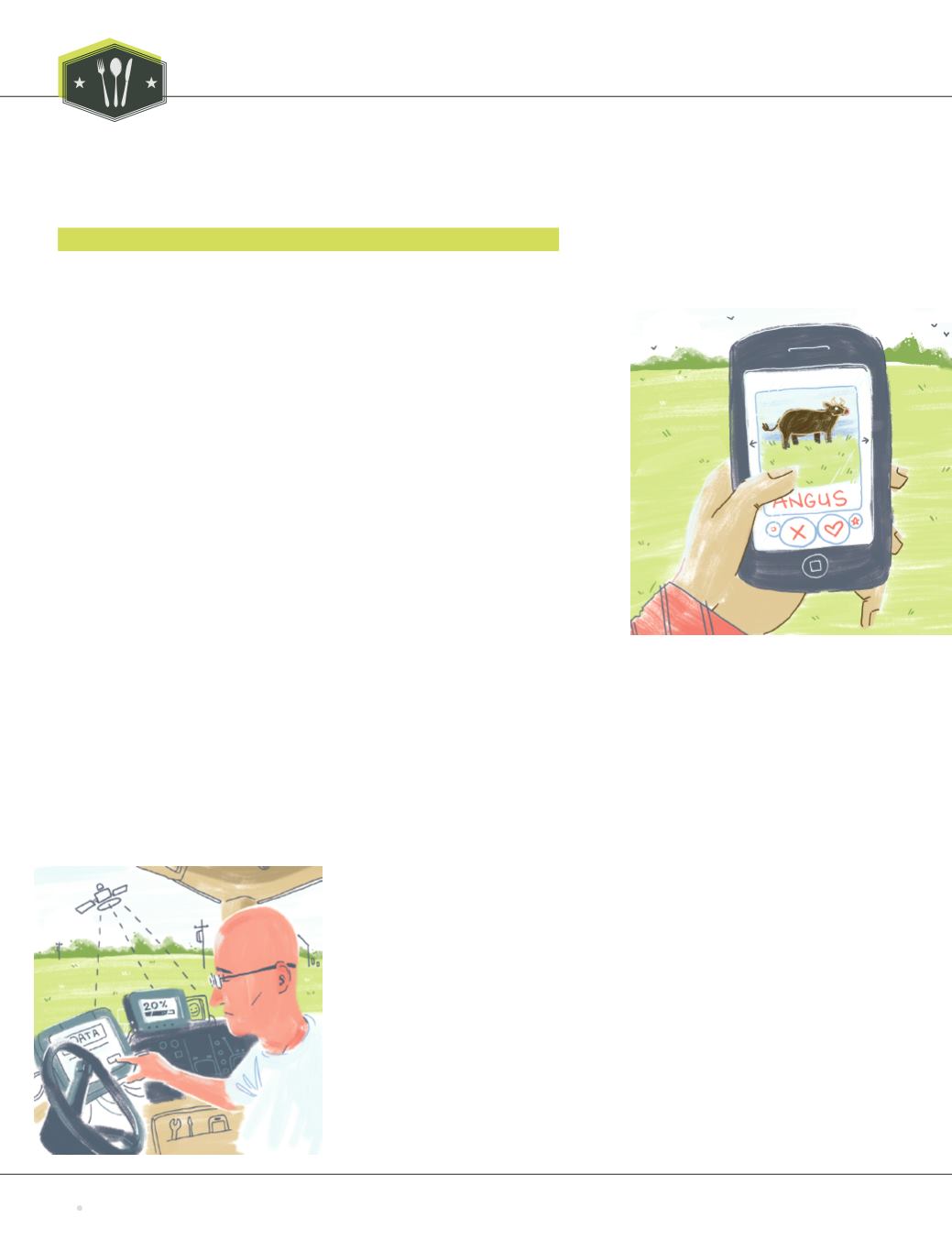

BY PETER GREDIG
Old job, newtools
FARMING ISN’T ROCKET SCIENCE.
It’s actually more complicated than that.
The high-tech equipment and production
practices employed by farmers today
raise the bar on efficiency, environmental
sustainability and, ultimately, food quality
and safety. Reducing costs and improving
productivity is a common theme with new
technologies. Here is a quick summary
of a few of the technologies at play on
Canadian farms.
GLOBAL POSITIONING SYSTEMS
(GPS)
Grain farmers have been taking advantage
of GPS technology for almost 20 years, and
it’s been a game changer. Initially, GPS
yield monitors on harvesting equipment
allowed farmers to know exactly how much
crop they harvested from every square me-
tre of their land. Over time, locational yield
data has allowed farmers to better manage
the variability in their fields.
Recently, GPS technology has expand-
ed to provide precision guidance to farm
equipment. Some systems are accurate to
within an inch, and the tractors, sprayers
and combines literally drive themselves
thanks to hydraulic steering compo-
nents that are connected and directed
by incoming GPS signals. This means no
overlap or missed spots when seeding,
fertilizing or spraying crops—even with
equipment that is 60, 80 or more than 100
feet wide. There is still a human sitting in
the driver’s seat, but that person’s job is to
make sure everything is working properly
instead of steering the machine—which
means less operator fatigue during long
hours in the field. Hands-free guidance
technology is rapidly becoming main-
stream because it saves time, fuel, fertiliz-
er and other crop-protection products.
VARIABLE RATE TECHNOLOGY
An end result of farmers’ ability to collect
GPS-specific yield, soil type and fertility
data is the creation of production zones.
Instead of applying one rate of fertilizer
and seed across an entire field, many
farmers are now using variable-rate-en-
abled equipment to take into account
the high-, medium- and low-production
zones across each field. An electronic
“prescription” is generated and fed into
the seeder or fertilizer applicator so that,
as the machine goes across the field,
the rate applied matches the production
zone. Putting more fertilizer or seed in
high-production zones and less where the
yield potential is lower improves efficiency
and reduces over-application.
MOBILE TECHNOLOGY
Smartphones and tablets are a perfect fit
for farmers who would much rather be in
the field, barn or shop than sitting in their
office. Running a farm business involves
making a lot of decisions, often on the
fly, as weather or markets change. Mobile
Internet, email, GPS, real-time video com-
munication, financial management and re-
cordkeeping—all of these capabilities mean
better management decisions because so
much information is available whenever
and wherever the farmer needs it.
There are numerous apps designed spe-
cifically for farmers to help them identify
and control pests, market their grain,
order parts for equipment, determine
appropriate fertilizer blends and rates,
diagnose and treat livestock disease, move
irrigation pivots and much more. Smart-
phones are becoming the remote control
and virtual office for progressive farmers
who are constantly on the move.
PLANT AND ANIMAL GENETICS
Plant and livestock trait selection and
breeding has been an ongoing process for
more than a thousand years, but recent
advances in plant genetics have delivered
dramatic improvements. These include
not only significant yield increases, but
also drought tolerance, disease and pest
resistance, and lower fertilizer require-
ments, to name only a few.
The Food Issue
2016
Grains
West
40
TECHNOLOGY REIGNS SUPREME INAGRICULTURE
FARMING
101









